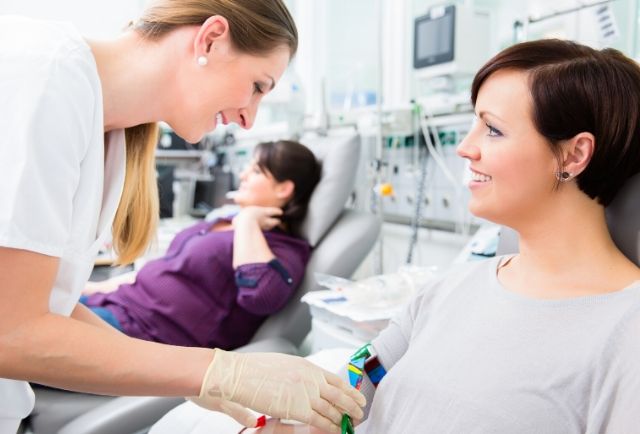Indicators on Northeast Medical Institute - New Haven Campus Phlebotomy Course & Cna Class You Need To Know
Indicators on Northeast Medical Institute - New Haven Campus Phlebotomy Course & Cna Class You Need To Know
Blog Article
5 Simple Techniques For Northeast Medical Institute - New Haven Campus Phlebotomy Course & Cna Class
Table of ContentsThe Northeast Medical Institute - New Haven Campus Phlebotomy Course & Cna Class PDFs9 Simple Techniques For Northeast Medical Institute - New Haven Campus Phlebotomy Course & Cna ClassThe Facts About Northeast Medical Institute - New Haven Campus Phlebotomy Course & Cna Class RevealedNortheast Medical Institute - New Haven Campus Phlebotomy Course & Cna Class for BeginnersNortheast Medical Institute - New Haven Campus Phlebotomy Course & Cna Class - TruthsGetting My Northeast Medical Institute - New Haven Campus Phlebotomy Course & Cna Class To Work
However, making use of such devices should be accompanied by other infection prevention and control methods, and training in their use. Not all safety and security gadgets are relevant to phlebotomy. Before selecting a safety-engineered tool, customers should completely investigate available tools to establish their suitable usage, compatibility with existing phlebotomy methods, and efficacy in shielding personnel and people (12, 33).For setups with reduced sources, price is a motoring factor in procurement of safety-engineered devices. Where safety-engineered tools are not readily available, experienced use of a needle and syringe is acceptable.
In the blood-sampling space for an outpatient division or center, provide a comfortable reclining couch with an arm rest.
Not known Facts About Northeast Medical Institute - New Haven Campus Phlebotomy Course & Cna Class
Guarantee that the signs for blood sampling are clearly defined, either in a written protocol or in recorded guidelines (e.g. in a laboratory form). Collect all the equipment required for the procedure and place it within secure and easy reach on a tray or trolley, guaranteeing that all the things are plainly noticeable.
Present yourself to the patient, and ask the client to state their complete name. Check that the laboratory kind matches the patient's identification (i.e. match the person's information with the lab type, to make sure precise recognition).
Make the individual comfortable in a supine placement (ideally). Area a clean paper or towel under the patient's arm. Review the examination to be performed (see Annex F) and get spoken permission. The patient has a right to reject a test any time prior to the blood tasting, so it is necessary to ensure that the patient has actually understood the treatment.
The 6-Second Trick For Northeast Medical Institute - New Haven Campus Phlebotomy Course & Cna Class
Extend the individual's arm and inspect the antecubital fossa or forearm. Locate a capillary of a great dimension that is noticeable, straight and clear.
DO NOT insert the needle where capillaries are diverting, because this increases the opportunity of a haematoma. Finding the capillary will aid in establishing the right size of needle.
Samplings from central lines bring a danger of contamination or erroneous lab examination results. It is appropriate, yet not optimal, to attract blood specimens when very first presenting an in-dwelling venous tool, prior to attaching the cannula to blog the intravenous liquids.
About Northeast Medical Institute - New Haven Campus Phlebotomy Course & Cna Class
Allow the location to dry. Failure to permit enough call time increases the risk of contamination. DO NOT touch the cleansed website; particularly, DO NOT position a finger over the vein to guide the shaft of the exposed needle. It the site is touched, repeat the disinfection. Do venepuncture as follows.
Ask the patient to develop a clenched fist so the capillaries are a lot more famous. Enter the capillary promptly at a 30 degree angle or less, and proceed to present the needle along the capillary at the easiest angle of access - CNA Courses. Once sufficient blood has been accumulated, release the tourniquet BEFORE withdrawing the needle
Northeast Medical Institute - New Haven Campus Phlebotomy Course & Cna Class Things To Know Before You Get This
Withdraw the needle gently and apply gentle stress to the site with a tidy gauze or dry cotton-wool ball. Ask the client to hold the gauze or cotton woollen in position, with the arm extended and elevated. Ask the individual NOT to bend the arm, because doing so creates a haematoma.

Excitement About Northeast Medical Institute - New Haven Campus Phlebotomy Course & Cna Class
Do not push the syringe bettor due to the fact that added pressure raises the risk of haemolysis. Where possible, maintain televisions in a rack and relocate the shelf in the direction of you. Inject downwards into the suitable coloured stopper. DO NOT remove the stopper because it will release the vacuum cleaner. If the example tube does not have a rubber stopper, infuse incredibly slowly into television as reducing the stress and speed used to move the sampling lowers the risk of haemolysis.

Report this page